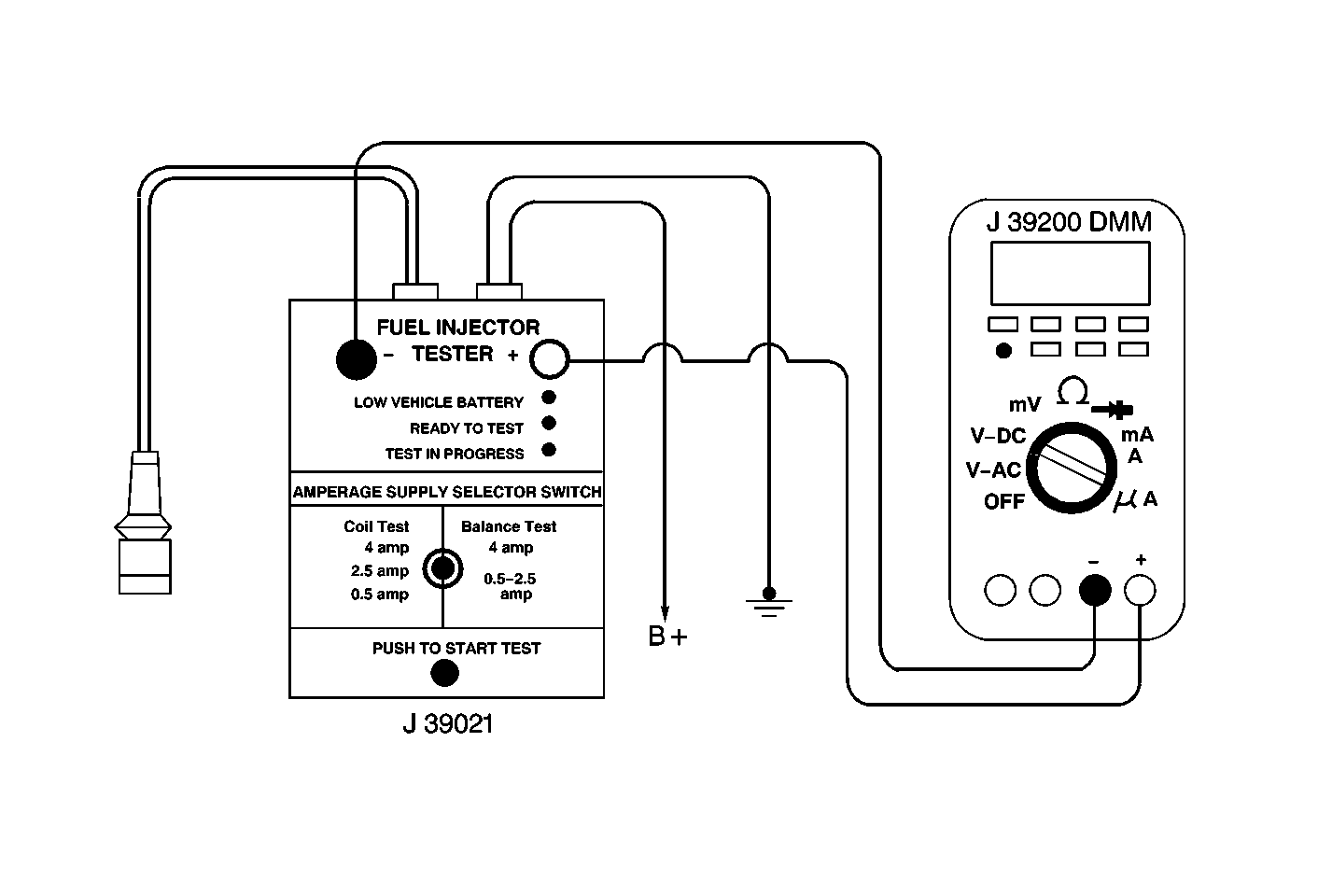
Circuit Description
Refer to Electrical Schematic Diagrams for an electrical diagram of this circuit.
The injector coil test is performed to diagnose a faulty fuel injector. The injector coil test makes use of the Fuel Injector Test J 39021. The tester is used to supply current to each fuel injector. This allows injector resistance measurement by using a Digital Multi-Meter (DMM) to measure voltage drop.
Diagnostic Aids
Low voltage indicates a high resistance at an injector's coil.
Test Description
Caution: Wrap a shop towel around the fuel pressure connection in order to reduce the risk of fire and personal injury. The towel will absorb any fuel leakage that occurs during the connection of the fuel pressure gage. Place the towel in an approved container when the connection of the fuel pressure gage is complete.
-
The engine coolant temperature affects the ability of the fuel injector tester to detect a faulty fuel injector. If the engine coolant temperature is between 10°C-35°C (50°F-95°F), go to Fuel Injector Solenoid Coil Test - Engine Coolant Temperature Between 10-35 Degrees C (50-95 Degrees F) .
-
The first second of the voltage displayed by the DMM may be inaccurate due to the initial current surge, therefore, record the lowest voltage displayed by the DMM after the first second of the test. The voltage displayed by the DMM may increase throughout the test as the fuel injector windings warm and the resistance of the fuel injector windings changes. An erratic voltage reading (large fluctuations in voltage that do not stabilize) indicates an intermittent connection within the fuel injector. From the voltages recorded, identify the highest voltage, excluding any voltages above 9.5 volts. Subtract each voltage that is not above 9.5 volts from the highest voltage. Record each subtracted value (refer to the Example). The subtracted value for any fuel injector must not exceed 0.6 volt. A fuel injector with a subtracted value that is greater than 0.7 volt is considered faulty and must be replaced. A fuel injector with a recorded voltage above 9.5 volts is also considered faulty and must be replaced.
Highest Voltage Reading | Acceptable Subtracted Value Above/Below 10°C-35°C (50°F-95°F) | ||
|---|---|---|---|
7.1 Volts | 0.6 Volts | ||
Injector Number | Voltage | Subtracted Value | Pass/Fail |
1 | 9.8 | -- | F |
2 | 6.6 | 0.5 | P |
3 | 6.9 | 0.2 | P |
4 | 5.8 | 1.3 | F |
5 | 7.0 | 0.1 | P |
6 | 7.1 | 0.0 | P |
7 | 7.0 | 0.1 | P |
8 | 7.1 | 0.1 | P |
Step | Action | Value(s) | Yes | No | ||||||
|---|---|---|---|---|---|---|---|---|---|---|
1 | Was the Powertrain On-Board Diagnostic (OBD) System Check performed? | -- | ||||||||
Is the engine coolant temperature outside the specified limits? | 10°C-35°C (50°F-95°F) | |||||||||
Notice: In order to prevent flooding of a single cylinder and possible engine damage, relieve the fuel pressure before performing the fuel injector coil test procedure. Important: Check the engine coolant temperature again to ensure that the correct table is being used. Important : The voltage reading may rise during the test. Is any value that resulted from subtraction greater than the specified value? | 0.6 volts | |||||||||
4 | Replace any fuel injector that had any of the following:
Refer to Fuel Injector Balance Test . Is the action complete? | -- | -- |
